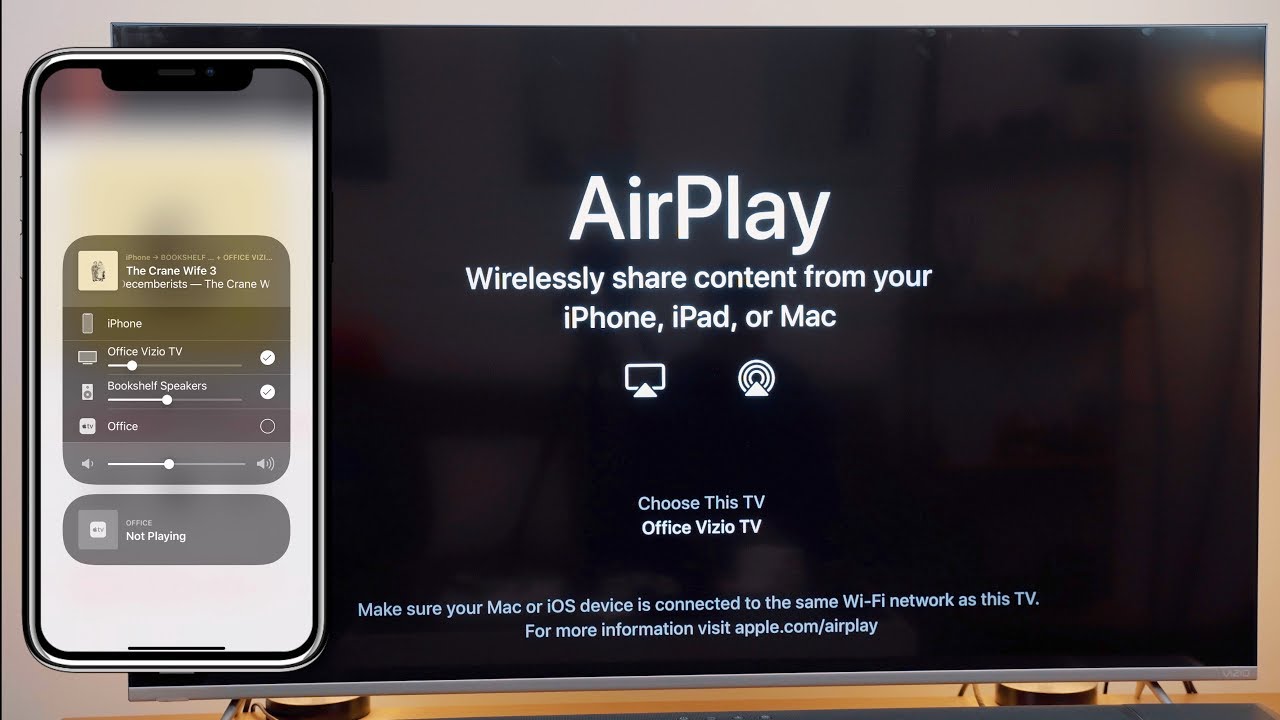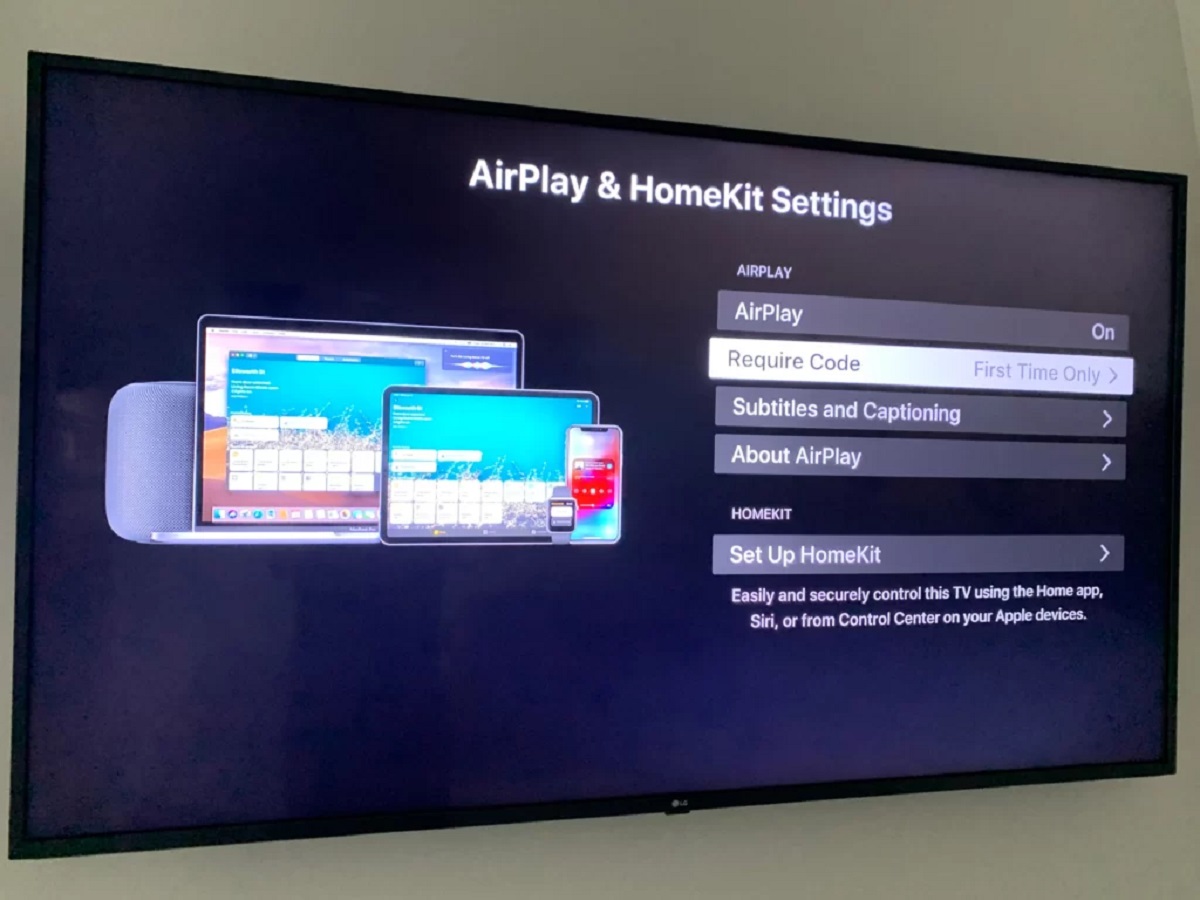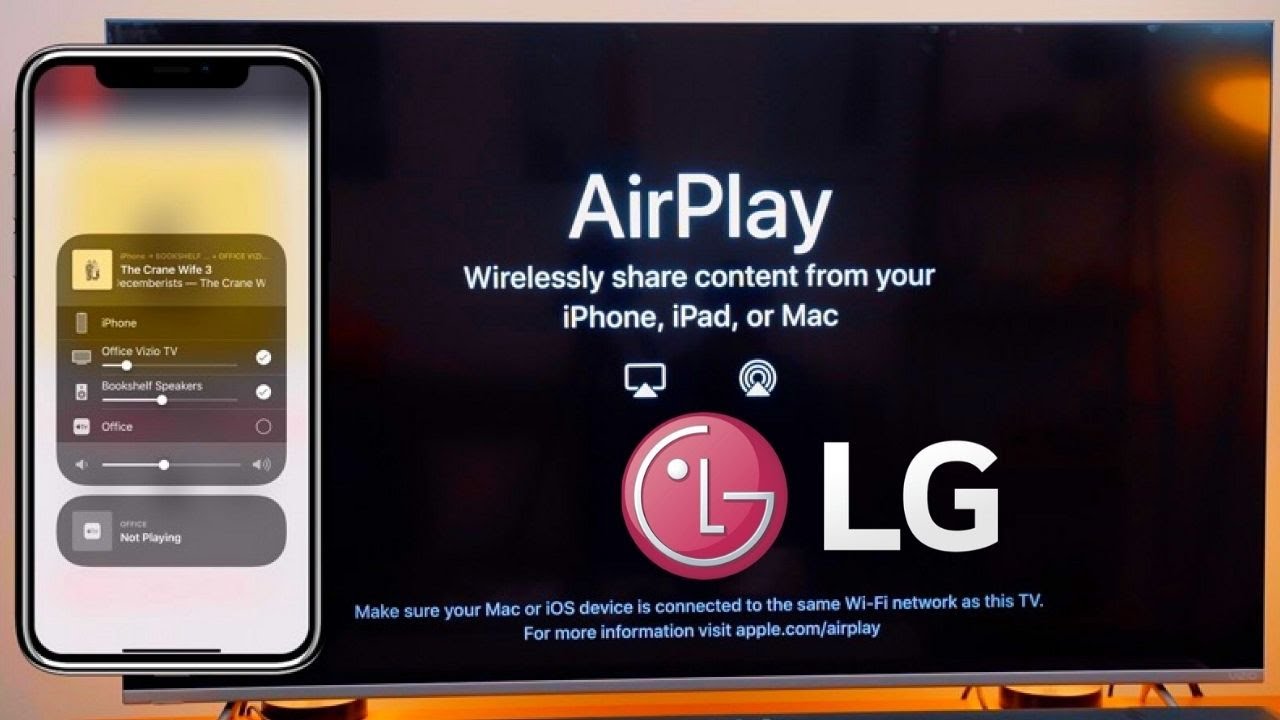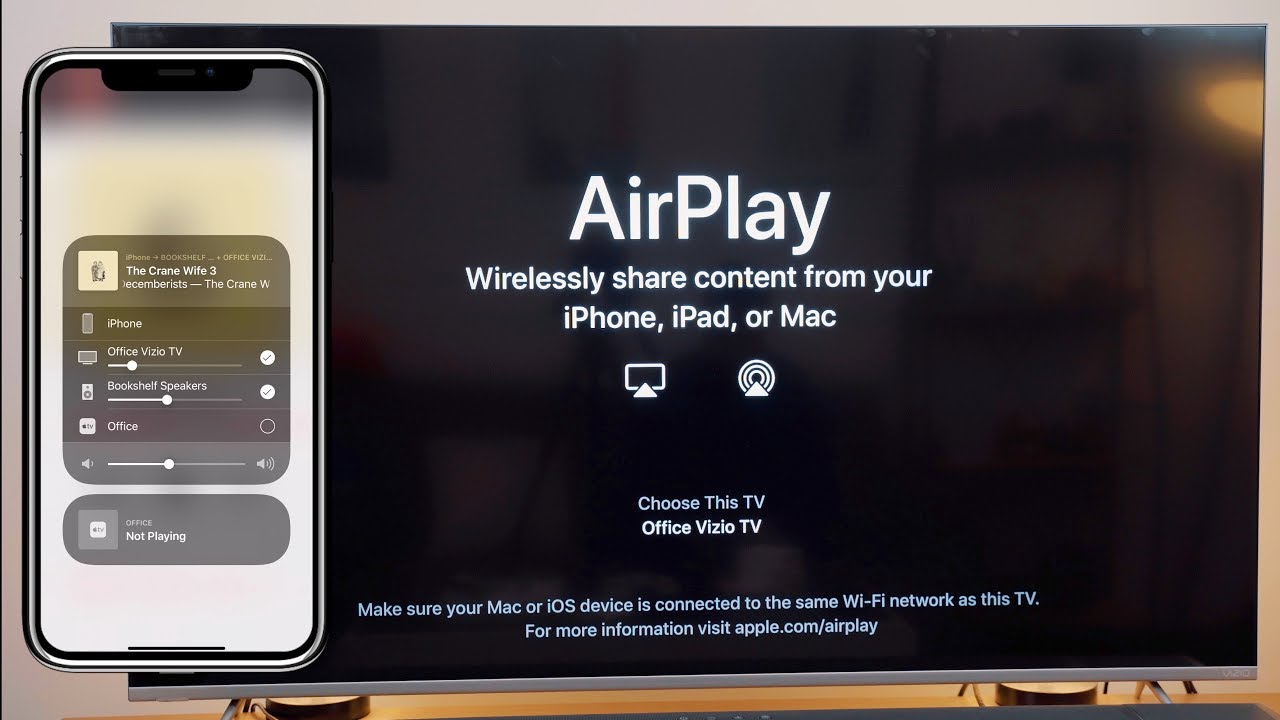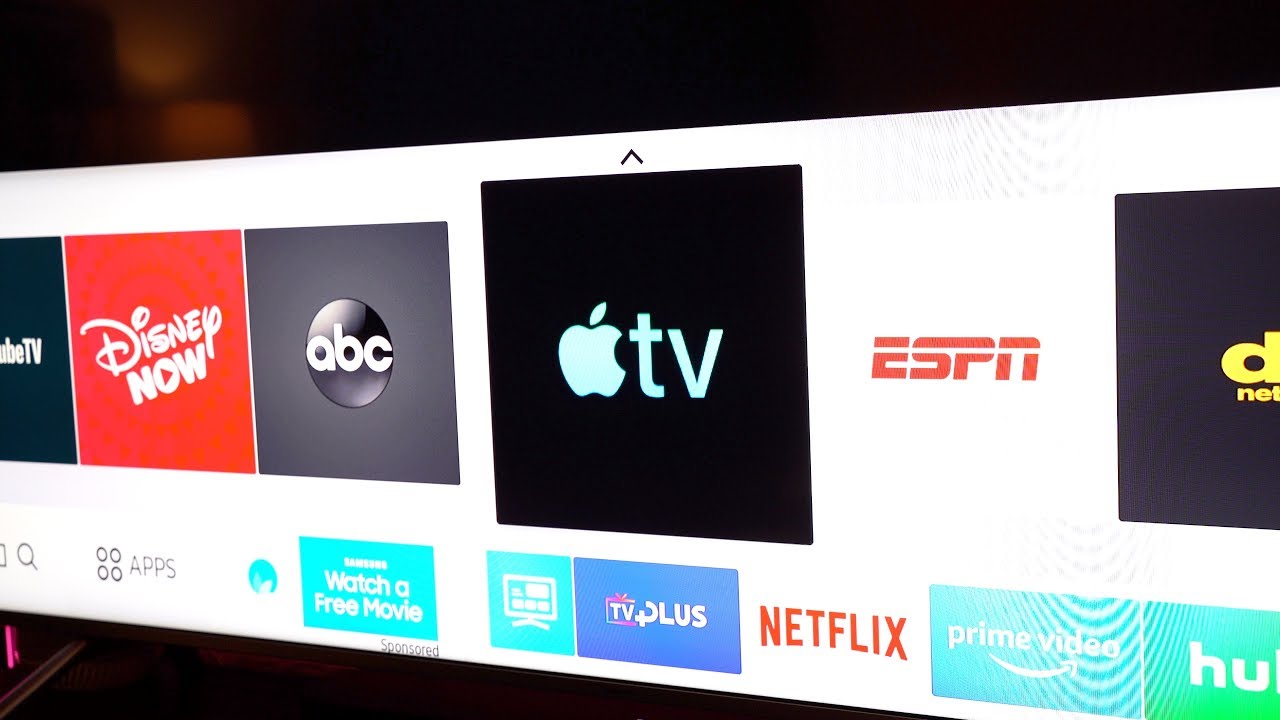Introduction
AirPlay is a powerful feature that allows you to seamlessly stream content from your iPhone, iPad, or Mac to your Apple TV. Whether you want to enjoy a movie, share photos with friends, or stream your favorite music, AirPlay makes it easy and convenient to connect your devices and enjoy a larger viewing experience.
With AirPlay, you can wirelessly mirror the screen of your iOS device or Mac to your Apple TV, giving you the freedom to enjoy your content on a bigger screen with better sound quality. This feature is not only useful for entertainment purposes but also comes in handy for presentations, showcasing photos, and even playing games.
Setting up AirPlay on your Apple TV is a straightforward process that requires minimal effort. Once enabled, you can start streaming your favorite content in just a few simple steps. In this guide, we will walk you through the process of enabling AirPlay on your Apple TV and how to use it from your iPhone, iPad, or Mac.
So, if you’re ready to dive into the world of AirPlay and unlock a whole new level of entertainment on your Apple TV, let’s get started!
What is AirPlay
AirPlay is a proprietary wireless technology developed by Apple that allows you to stream audio and video content from your iOS devices or Mac to your Apple TV or other AirPlay-enabled speakers and devices.
When you enable AirPlay on your Apple TV, you can wirelessly mirror the screen of your iPhone, iPad, or Mac on your television screen. This means that whatever you see on your iOS device or Mac, such as movies, photos, presentations, or even games, will be displayed on the big screen with crisp visuals and immersive sound.
Not only does AirPlay support mirroring, but it also allows you to stream audio content to compatible speakers or receivers. This means that you can play your favorite music from your iPhone, iPad, or Mac and have it play through your Apple TV or other AirPlay-enabled speakers, creating a rich and immersive audio experience.
With AirPlay, you also have the ability to control playback using your iOS device or Mac, making it incredibly convenient to navigate through your content without having to touch your Apple TV remote. You can play, pause, skip tracks, adjust volume, and even control playback from your lock screen or Control Center.
AirPlay works over Wi-Fi, so you will need a stable network connection for it to function properly. It uses industry-standard protocols such as Wi-Fi Direct and Miracast to establish a secure and reliable connection between your devices.
Overall, AirPlay enhances the overall entertainment experience by eliminating the need for cables and allowing you to effortlessly stream and enjoy your favorite content on a larger screen or through high-quality speakers. It’s a versatile feature that adds convenience and flexibility to your Apple TV setup, making it a must-have for anyone who wants to take full advantage of their iOS devices and Mac.
How to Enable AirPlay on Apple TV
Enabling AirPlay on your Apple TV is a simple process that can be done directly from the settings menu. Here’s how you can get started:
- First, ensure that your Apple TV is turned on and connected to your television.
- Using the Apple TV remote, navigate to the home screen of your Apple TV.
- Select the “Settings” app from the home screen.
- In the settings menu, scroll down and select “AirPlay.”
- On the AirPlay settings page, you’ll see an option to enable AirPlay. Toggle the switch to turn it on.
- Once AirPlay is enabled, you can customize additional settings such as requiring a code for AirPlay connections or allowing access only from devices on the same Wi-Fi network.
- That’s it! AirPlay is now enabled on your Apple TV.
With AirPlay enabled, you can now start streaming content from your iOS devices or Mac to your Apple TV. Keep reading to learn how to AirPlay from different devices.
It’s important to note that for AirPlay to work, your Apple TV and your iOS devices or Mac need to be connected to the same Wi-Fi network. Ensure that all devices are connected to the network before attempting to use AirPlay.
How to AirPlay from iPhone to Apple TV
AirPlay allows you to easily stream content from your iPhone to your Apple TV, whether it’s movies, photos, or even games. Here’s a step-by-step guide on how to AirPlay from your iPhone to your Apple TV:
- Make sure your iPhone and Apple TV are connected to the same Wi-Fi network.
- On your iPhone, open the Control Center by swiping down from the top right corner on iPhone X or newer, or swiping up from the bottom on older iPhone models.
- In the Control Center, tap on the “Screen Mirroring” button.
- A list of available devices will appear. Select your Apple TV from the list.
- If prompted, enter the AirPlay code displayed on your Apple TV.
- Your iPhone screen will now be mirrored on your Apple TV. You can navigate through your iPhone as usual, and whatever you do will be displayed on the big screen.
- To stop AirPlay, open the Control Center again and tap on the “Screen Mirroring” button. Then, select “Stop Mirroring” and confirm when prompted.
It’s worth mentioning that certain apps may have built-in AirPlay support, allowing you to directly stream content without mirroring the entire screen. In these cases, look for the AirPlay icon within the app and select your Apple TV to start streaming.
AirPlay from iPhone to Apple TV opens up a world of possibilities, enabling you to enjoy your favorite content on a larger screen with enhanced audio. Whether you’re watching a movie, sharing photos with friends and family, or playing games, AirPlay adds a whole new dimension to your entertainment experience.
How to AirPlay from iPad to Apple TV
AirPlay makes it effortless to stream content from your iPad to your Apple TV, allowing you to enjoy videos, photos, and more on the big screen. Here’s a step-by-step guide on how to AirPlay from your iPad to your Apple TV:
- Ensure that your iPad and Apple TV are connected to the same Wi-Fi network.
- On your iPad, open the Control Center by swiping down from the top right corner on iPadOS 13 and newer, or swiping up from the bottom on older iPad models.
- In the Control Center, tap on the “Screen Mirroring” button.
- A list of available devices will appear. Select your Apple TV from the list.
- If prompted, enter the AirPlay code displayed on your Apple TV.
- Your iPad screen will now be mirrored on your Apple TV. You can navigate through your iPad as usual, and whatever you do will be displayed on the big screen.
- To stop AirPlay, open the Control Center again and tap on the “Screen Mirroring” button. Then, select “Stop Mirroring” and confirm when prompted.
Just like with the iPhone, certain apps on your iPad may offer direct AirPlay support, allowing you to stream content without mirroring the whole screen. Look for the AirPlay icon within the app and select your Apple TV to start streaming.
Whether you’re watching movies, looking at photos, or browsing through your favorite apps, AirPlay from iPad to Apple TV provides a seamless and immersive experience. It transforms your iPad into a powerful entertainment device, delivering content to your television screen with remarkable clarity and sound.
How to AirPlay from Mac to Apple TV
AirPlay allows you to easily stream content from your Mac to your Apple TV, giving you the ability to enjoy movies, presentations, and more on a larger screen. Here’s a step-by-step guide on how to AirPlay from your Mac to your Apple TV:
- Make sure your Mac and Apple TV are connected to the same Wi-Fi network.
- On your Mac, click on the AirPlay icon located in the menu bar, near the Wi-Fi icon. If you don’t see the AirPlay icon, go to “System Preferences” > “Displays” > “Display” and check the box next to “Show mirroring options in the menu bar when available.”
- A drop-down menu will appear, displaying the available AirPlay devices. Select your Apple TV from the list.
- If prompted, enter the AirPlay code displayed on your Apple TV.
- Your Mac screen will now be mirrored on your Apple TV. You can use your Mac as usual, and whatever you do will be reflected on the big screen.
- To stop AirPlay, click on the AirPlay icon again in the menu bar and select “Turn Off AirPlay Mirroring.”
Alternatively, you can also enable AirPlay from within specific apps on your Mac that support it. Look for the AirPlay icon within the app and select your Apple TV to start streaming content directly.
AirPlay from Mac to Apple TV unlocks a new level of productivity and entertainment, allowing you to showcase presentations, collaborate on projects, and enjoy your favorite multimedia content on a larger display. It’s a valuable feature that enhances the versatility of your Mac and enriches your overall user experience.
Troubleshooting AirPlay Connection Issues
While AirPlay is generally reliable, there may be instances where you encounter connection issues. Here are some troubleshooting steps you can take to resolve AirPlay connection problems:
- Ensure that your Apple TV and the device you’re trying to AirPlay from (iPhone, iPad, or Mac) are connected to the same Wi-Fi network.
- Restart your Apple TV by going to “Settings” > “System” > “Restart.” Likewise, restart your iOS device or Mac.
- Check for software updates on both your Apple TV and your iOS device or Mac. Keeping them up to date can help resolve compatibility issues.
- Check if any other devices on your network are causing interference. Devices like wireless speakers, microwave ovens, or other networks operating on the same channel may impact AirPlay functionality. Try disconnecting or moving these devices away from your Apple TV or router.
- Reset your network settings on your iOS device or Mac. This can be done by going to “Settings” > “General” > “Reset” and selecting “Reset Network Settings.”
- Verify that AirPlay is enabled on your Apple TV by going to “Settings” > “AirPlay” and ensuring that the toggle is turned on.
- Check if the firewall on your Mac or router is blocking AirPlay connections. Temporarily disable the firewall and see if that resolves the issue. Remember to re-enable it after testing.
- If you’re experiencing audio or video playback issues, try adjusting the quality settings on your Apple TV. Lower quality settings may help alleviate buffering or latency problems.
- If all else fails, try power cycling your network equipment (modem and router) by unplugging them for a few seconds and then plugging them back in. This can help refresh the network connection.
By following these troubleshooting steps, you should be able to resolve most AirPlay connection issues. However, if the problem persists, you may want to consult Apple Support for further assistance or explore other solutions specific to your setup.
Conclusion
AirPlay is a remarkable feature that allows you to effortlessly stream content from your iPhone, iPad, or Mac to your Apple TV. By following the simple steps outlined in this guide, you can enable AirPlay on your Apple TV and start enjoying your favorite movies, photos, and music on the big screen with enhanced sound quality.
Whether you’re mirroring your iPhone or iPad screen, or streaming content directly from your Mac, AirPlay provides a seamless and immersive experience that enhances both your entertainment and productivity. It opens up a world of possibilities, allowing you to showcase presentations, collaborate on projects, and enjoy a wider range of multimedia content on your television.
Remember to troubleshoot any connection issues by ensuring that all devices are connected to the same Wi-Fi network, checking for software updates, and addressing any interference or firewall issues. By taking these steps, you can ensure a smooth and uninterrupted AirPlay experience.
So, whether you’re looking to enjoy a movie night with friends, share your latest vacation photos with family, or enhance your work presentations, AirPlay on Apple TV is a powerful tool that brings your content to life in a whole new way. Start exploring the possibilities today and unlock the full potential of your Apple devices!









